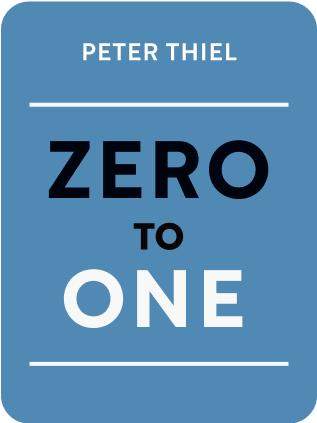

This article is an excerpt from the Shortform summary of "Zero To One" by Peter Thiel. Shortform has the world's best summaries of books you should be reading.
Like this article? Sign up for a free trial here .
What is the path to progress in technology, and how do you get there?
The path to progress can take several forms. In technology and globalization, the path to progress isn’t always clear, but it’s important to follow it.
The Challenge of the Future and the Path to Progress
Peter Thiel likes to ask job candidates what he calls a contrarian question: “What important truth do few people agree with you on?” The best answers point to the future.
Thiel’s answer is that most people think globalization will dictate or determine the world’s future, but he believes it’s technology that will.
The future will be rooted in today’s world, but different. It may be farther away or closer than we think, depending on the degree of progress we make. If things aren’t likely to change much over the next century, then the future is a century away; If they’re destined to change rapidly in the next decade, then the future is a decade away.
Answering the contrarian question is the closest we can come to predicting what will be.
The Path of Progress
The path to progress can be either horizontal or vertical. Horizontal or expansive progress results from duplicating success—going from 1 to n. We can easily envision this kind of progress because it’s much like the present. Vertical or intensive (focused) progress requires doing something new—going from 0 to 1. It’s more difficult to envision because we’ve never seen it before.
For example, starting with one typewriter and building 100 would be horizontal progress (duplicating something). In contrast, starting with a typewriter and building a word processor would be vertical progress (creating something new). Here are two examples of a path to progress.
Globalization is horizontal progress—it entails taking something that works in a particular place and replicating it everywhere. For instance, China’s 20-year plan is to be like the West is today.
Technology, going from 0 to 1, is a vertical path of progress—it encompasses anything new and better, including but not limited to computers.
These paths to progress can occur simultaneously or one at a time. For instance, the period from World War I through Nixon’s visit to China in 1971 featured technological development but not much globalization. However, since 1971, we’ve seen rapid globalization without much technological development beyond information technology.
Globalization is a path to homogenization. The way we talk about it implies a belief that technological path of progress has a peak: we refer to the developed and developing worlds as though Western nations have reached a fixed level of achievement to which poorer nations must catch up.
But continued globalization isn’t feasible without technological progress, because the industrialization of more countries will lead to more problems. For instance, if China doubles its industrial production without technology improvements, it will double its air pollution. Spreading the practices of developed countries globally will bring ruin rather than wealth.
New technology has never been a given. From the primitive agrarian societies thousands of years ago up until the advent of the steam engine in the 1760s, there was little technological path of progress. From that point, technological advances continued through 1970. In the late 1960s, however, people looked forward to a future of tech advances that didn’t happen—for instance, cheap energy and vacations on the moon. Although they expected great advances to be automatic, only computers and communications advanced dramatically. The key to a better future is both imagining and creating the technologies to get us there.
Startup Thinking
For several reasons, startups consisting of a few people with a mission are the source of most new technology. The path to progress means you have to recognize this vision.
Big organizations don’t often produce new technology because they tend to avoid risk. People working alone seldom produce new technology either. A brilliant loner might produce great art, but she wouldn’t have the means to create a new industry.
Startups work because it takes multiple people to create new technology, but also smallness for momentum and flexibility. Small companies encourage and are conducive to new thinking because they know new thinking is their biggest asset.
This book explores the questions that companies creating new things must answer in order to succeed. It’s a starting point rather than a manual. The first job of a startup is to question everything and rethink business from the beginning, forging a clear path to progress.
The path to progress isn’t always linear, but technology can help you see the path forward so you can develop new products.

———End of Preview———
Like what you just read? Read the rest of the world's best summary of Peter Thiel's "Zero To One" at Shortform .
Here's what you'll find in our full Zero To One summary :
- Why some companies genuinely move the world forward when most don't
- How to build a company that becomes a monopoly (and why monopolies aren't bad)
- Silicon Valley secrets to selling products and building rockstar teams






